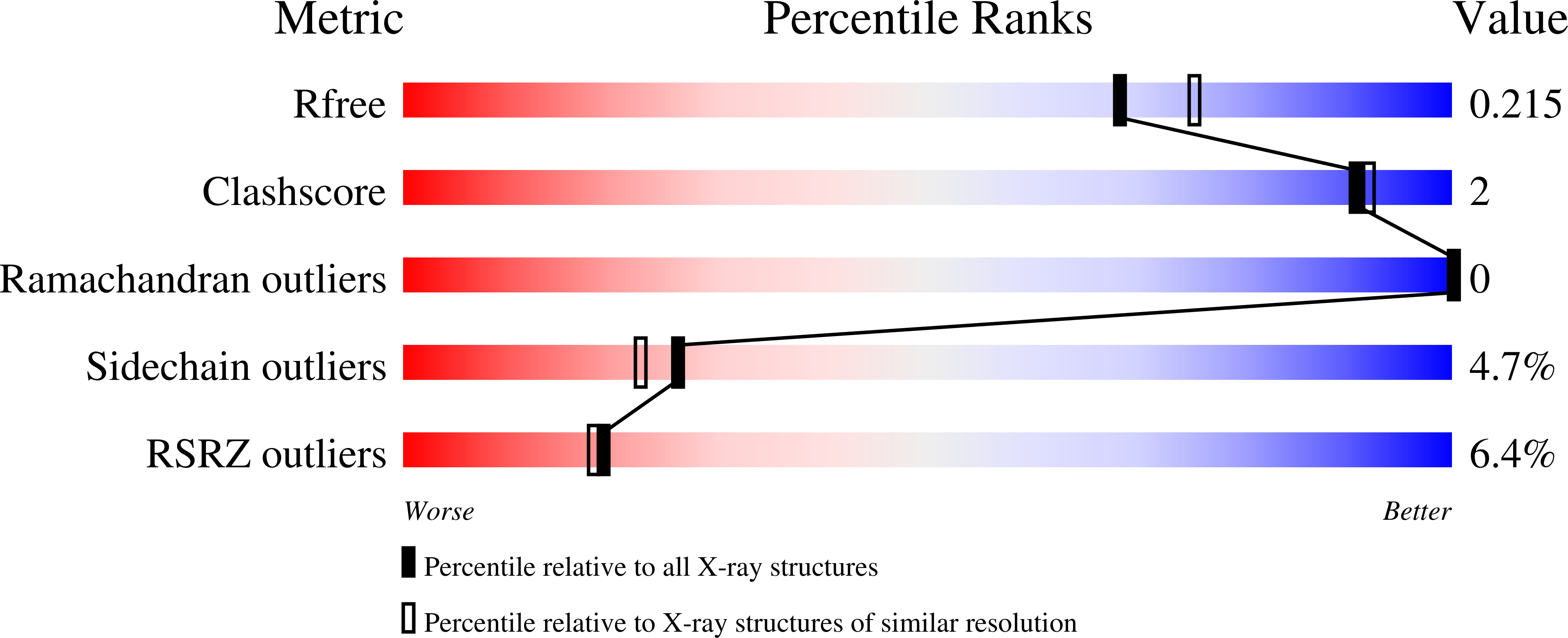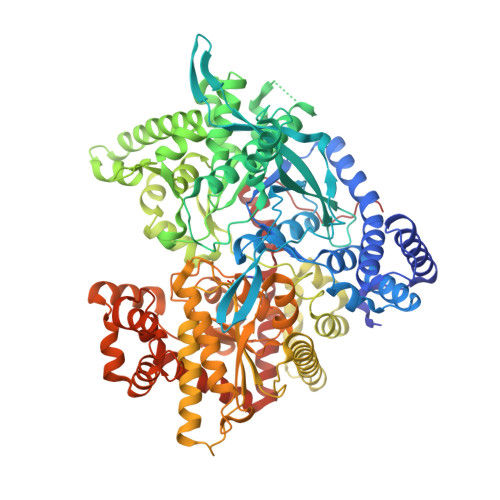Sourcing the affinity of flavonoids for the glycogen phosphorylase inhibitor site via crystallography, kinetics and QM/MM-PBSA binding studies: Comparison of chrysin and flavopiridol
Tsitsanou, K.E., Hayes, J.M., Keramioti, M., Mamais, M., Oikonomakos, N.G., Kato, A., Leonidas, D.D., Zographos, S.E.(2013) Food Chem Toxicol 61: 14-27
- PubMed: 23279842
- DOI: https://doi.org/10.1016/j.fct.2012.12.030
- Primary Citation of Related Structures:
3EBO, 3EBP - PubMed Abstract:
Flavonoids have been discovered as novel inhibitors of glycogen phosphorylase (GP), a target to control hyperglycemia in type 2 diabetes. To elucidate the mechanism of inhibition, we have determined the crystal structure of the GPb-chrysin complex at 1.9 Å resolution. Chrysin is accommodated at the inhibitor site intercalating between the aromatic side chains of Phe285 and Tyr613 through π-stacking interactions. Chrysin binds to GPb approximately 15 times weaker (Ki=19.01 μM) than flavopiridol (Ki=1.24 μM), exclusively at the inhibitor site, and both inhibitors display similar behavior with respect to AMP. To identify the source of flavopiridols' stronger affinity, molecular docking with Glide and postdocking binding free energy calculations using QM/MM-PBSA have been performed and compared. Whereas docking failed to correctly rank inhibitor binding conformations, the QM/MM-PBSA method employing M06-2X/6-31+G to model the π-stacking interactions correctly reproduced the experimental results. Flavopiridols' greater binding affinity is sourced to favorable interactions of the cationic 4-hydroxypiperidin-1-yl substituent with GPb, with desolvation effects limited by the substituent conformation adopted in the crystallographic complex. Further successful predictions using QM/MM-PBSA for the flavonoid quercetagetin (which binds at the allosteric site) leads us to propose the methodology as a useful and inexpensive tool to predict flavonoid binding.
Organizational Affiliation:
Institute of Biology, Medicinal Chemistry and Biotechnology, National Hellenic Research Foundation, 48 Vassileos Constantinou Avenue, Athens 11635, Greece.
















